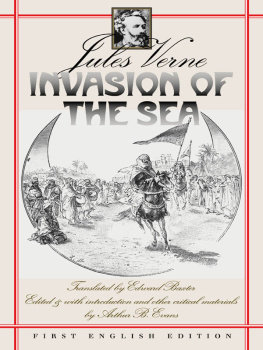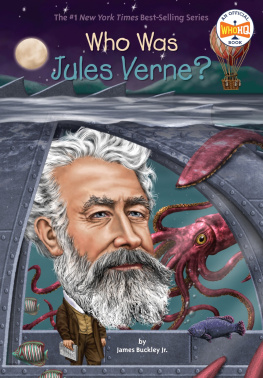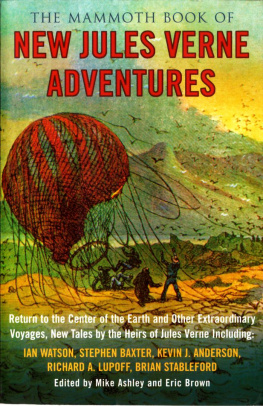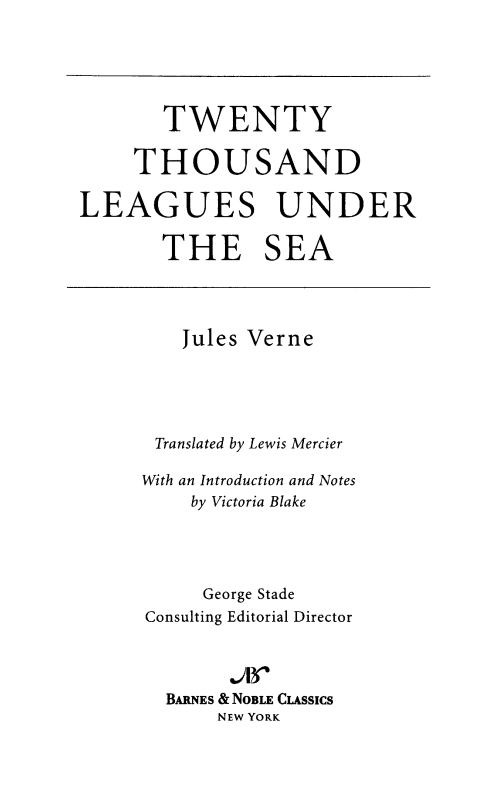
Table of Contents
From the Pages of
Twenty Thousand Leagues Under the Sea
The year 1866 was signalized by a remarkable incident, a mysterious and inexplicable phenomenon, which doubtless no one has yet forgotten. (page 5)
The monster emerged some fathoms from the water, and then threw out that very intense but mysterious light mentioned in the report of several captains. This magnificent irradiation must have been produced by an agent of great shining power. The luminous part traced on the sea an immense oval, much elongated, the center of which condensed a burning heat, whose overpowering brilliancy died out by successive gradations. (page 30)
The sea is everything. It covers seven-tenths of the terrestrial globe. Its breath is pure and healthy. It is an immense desert, where man is never lonely, for he feels life stirring on all sides. The sea is only the embodiment of a supernatural and wonderful existence. (page 57)
I owe all to the ocean; it produces electricity, and electricity gives heat, light, motion, and, in a word, life to the Nautilus. (page 64)
Captain Nemo, by the help of his sextant, took the altitude of the sun, which ought also to give the latitude. He waited for some moments till its disk touched the horizon. While taking observations not a muscle moved; the instrument could not have been more motionless in a hand of marble. (page 74)
Evidently from some part of the vessel they had by means of a tap given entrance to the water, which was invading us, and with which the room was soon filled. A second door cut in the side of the Nautilus then opened. We saw a faint light. In another instant our feet trod the bottom of the sea. (page 86)
At this moment, the Nautilus, raised by the last waves of tide, quitted her coral bed exactly at the fortieth minute fixed by the captain. Her screw swept the waters slowly and majestically. Her speed increased gradually, and sailing on the surface of the ocean, she quitted safe and sound the dangerous passes of the Straits of Torres. (page 128)
Steam seems to have killed all gratitude in the hearts of sailors. (page 167)
I returned to the glass. The Nautilus was no longer moving, the heat was becoming unbearable. The sea, which till now had been white, was red, owing to the presence of salts of iron. In spite of the ships being hermetically sealed, an insupportable smell of sulphur filled the saloon, and the brilliancy of the electricity was entirely extinguished by bright scarlet flames. I was in a bath, I was choking, I was broiled. (page 186)
At a signal from the captain, its screw was shipped, and its blades raised vertically; the Nautilus shot into the air like a balloon, rising with stunning rapidity, and cutting the mass of waters with a sonorous agitation. Nothing was visible; and in four minutes it had shot through the four leagues which separated it from the ocean, and, after emerging like a flying-fish, fell, making the waves rebound to an enormous height. (pages 218-219)
Adieu, sun! Disappear, thou radiant orb! Rest beneath this open sea, and let a night of six months spread its shadows over my new domains! (page 243)
Captain Nemo, covered with blood, nearly exhausted, gazed upon the sea that had swallowed up one of his companions, and great tears gathered in his eyes. (page 270)
If Captain Nemo still inhabits the ocean, his adopted country, may hatred be appeased in that savage heart! (page 296)
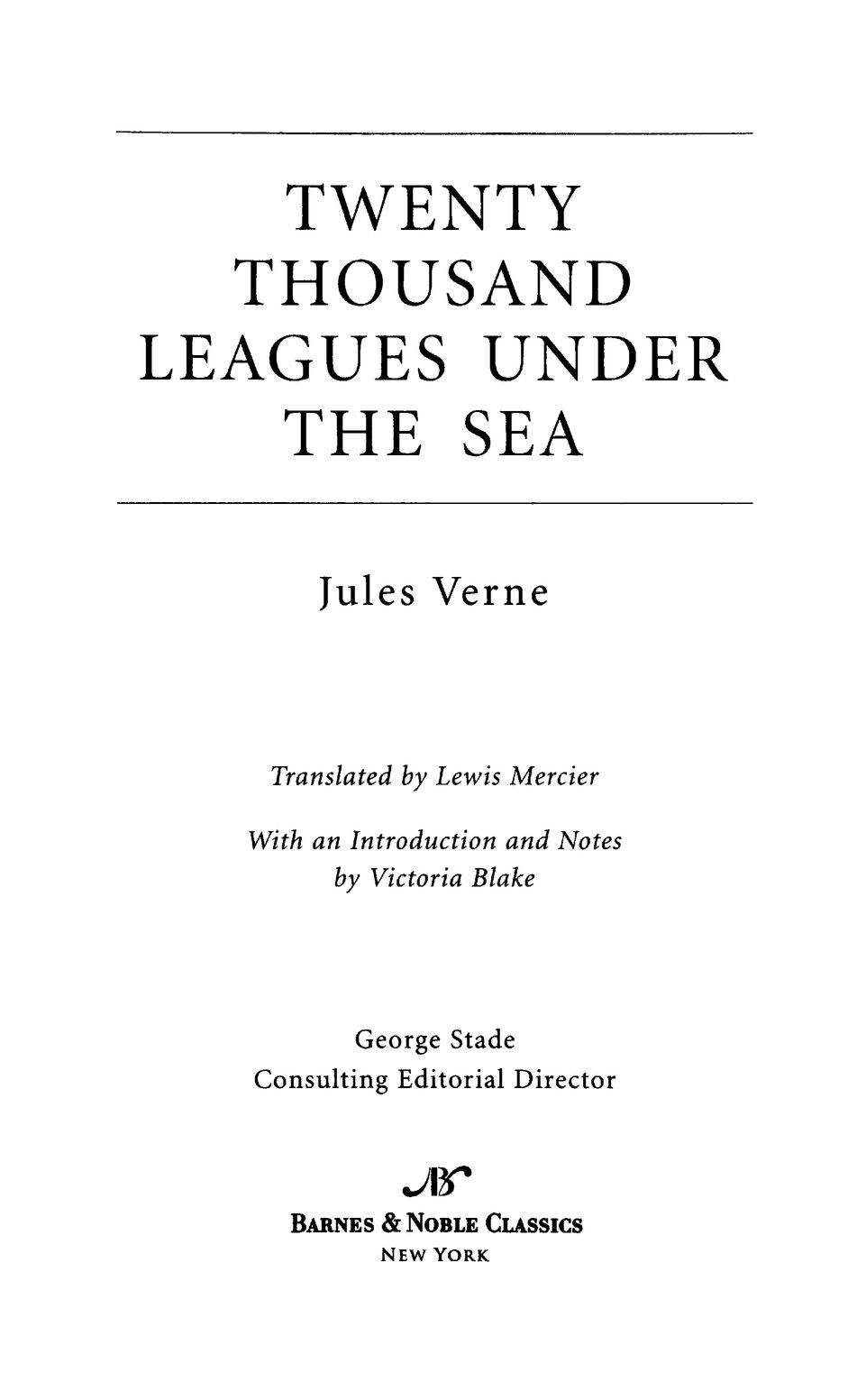
Jules Verne
The creator of the roman scientifique, the popular literary genre known today as science fiction, Jules Gabriel Verne was born in the port town of Nantes, France, in 1828. His father, Pierre, was a prominent lawyer, and his mother, Sophie, was from a successful ship-building family. Despite his fathers wish that he pursue law, young Jules was fascinated by the sea and all things foreign and adventurous. Legend holds that at age eleven he ran away from school to work aboard a ship bound for the West Indies but was caught by his father shortly after leaving port.
Jules developed an abiding love of science and language from a young age. He studied geology, Latin, and Greek in secondary school, and frequently visited factories, where he observed the workings of industrial machines. These visits likely inspired his desire for scientific plausibility in his writing and perhaps informed his depictions of the submarine Nautilus and the other seemingly fantastical inventions he described.
After completing secondary school, Jules studied law in Paris, as his father had before him. However, during the two years he spent earning his degree, he developed more consuming interests. Through family connections, he entered Parisian literary circles and met many of the distinguished writers of the day. Inspired in particular by novelists Victor Hugo and Alexandre Dumas (father and son), Verne began writing his own works. His poetry, plays, and short fiction achieved moderate success, and in 1852 he became secretary of the Theatre lyrique.
In 1857 he married Honorine Morel, a young widow with two children. Seeking greater financial security, he took a position as a stockbroker with the Paris firm Eggly and Company. However, he reserved his mornings for writing. Baudelaires recently published French translation of the works of Edgar Allan Poe, as well as the days Verne spent researching points of science in the library, inspired him to write a new sort of novel: the roman scientifique. His first such novel, Five Weeks in a Balloon, was an immediate success and earned him a publishing contract with the important editor Pierre-Jules Hetzel.
For the rest of his life, Verne published an average of two novels a year; the fifty-four volumes published during his lifetime, collectively known as Voyages Extraordinaires, include his best-known works, Around the World in Eighty Days and Twenty Thousand Leagues Under the Sea. Begun in 1865 and published to huge success in 1869, Twenty Thousand Leagues has been translated into 147 languages and adapted into dozens of films. The novel also holds the distinction of describing a submarine twenty-five years before one was actually constructed. As a tribute to Verne, the first electric and nuclear submarines were named Nautilus.
In 1872 Verne settled in Amiens with his family. During the next several years he traveled extensively on his yachts, visiting such locales as North Africa, Gibraltar, Scotland, and Ireland. In 1886 Vernes mentally ill nephew shot him in the leg, and the author was lame thereafter. This incident, as well as the tumultuous political climate in Europe, marked a change in Vernes perspective on science, exploration, and industry. Although not as popular as his early novels, Vernes later works are in many ways as prescient. Touching on such subjects as the ill effects of the oil industry, the negative influence of missionaries in the South Seas, and the extinction of animal species, they speak to concerns that remain urgent in our own time.
Verne continued writing actively throughout his life, despite failing health, the loss of family members, and financial troubles. At his death in 1905 his desk drawers contained the manuscripts of several new novels. Jules Verne is buried in the Madeleine Cemetery in Amiens.
Next page





